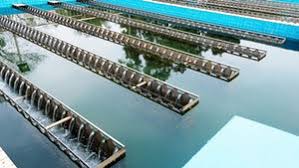
Breaking News
 Dead Men Tell No Tales: How Israel Eliminates Witnesses
Dead Men Tell No Tales: How Israel Eliminates Witnesses
 This Is Why Nice Neighborhoods Have No Blacks In It.
This Is Why Nice Neighborhoods Have No Blacks In It.
 Canada Locks Down the Woods. Fines Range from $25K – $150K for Hiking, Biking & Fishing
Canada Locks Down the Woods. Fines Range from $25K – $150K for Hiking, Biking & Fishing
 Trump Puts Washington DC Under Federal Control, Calls in 800 National Guard Troops
Trump Puts Washington DC Under Federal Control, Calls in 800 National Guard Troops
Top Tech News
 3D printing set to slash nuclear plant build times & costs
3D printing set to slash nuclear plant build times & costs
 You can design the wheels for NASA's next moon vehicle with the 'Rock and Roll Challenge
You can design the wheels for NASA's next moon vehicle with the 'Rock and Roll Challenge
 'Robot skin' beats human reflexes, transforms grip with fabric-powered touch
'Robot skin' beats human reflexes, transforms grip with fabric-powered touch
 World's first nuclear fusion plant being built in US to power Microsoft data centers
World's first nuclear fusion plant being built in US to power Microsoft data centers
 The mitochondria are more than just the "powerhouse of the cell" – they initiate immune...
The mitochondria are more than just the "powerhouse of the cell" – they initiate immune...
 Historic Aviation Engine Advance to Unlock Hypersonic Mach 10 Planes
Historic Aviation Engine Advance to Unlock Hypersonic Mach 10 Planes
 OpenAI CEO Sam Altman Pitches Eyeball-Scanning World ID to Bankers
OpenAI CEO Sam Altman Pitches Eyeball-Scanning World ID to Bankers
 New 3D-printed titanium alloy is stronger and cheaper than ever before
New 3D-printed titanium alloy is stronger and cheaper than ever before
 What is Unitree's new $6,000 humanoid robot good for?
What is Unitree's new $6,000 humanoid robot good for?
 "No CGI, No AI, Pure Engineering": Watch Raw Footage Of 'Star Wars'-Style Speeder
"No CGI, No AI, Pure Engineering": Watch Raw Footage Of 'Star Wars'-Style Speeder
Eco Wave Power announces second grid-connected project

The company switched on its first grid-connected project four years later, and has now announced the second – which will convert the rise and fall of waves at Jaffa Port in Israel into electricity.
The Eco Wave Power system features a series of floats that rest on the surface of the water. These floats rise and fall with the waves, and are connected to the support structure by hydraulic arms. Only the floats and pistons are set in the water, the power station that converts the wave energy into fluid pressure that drives a generator to create electricity is land-based.
The Jaffa Port project has been co-funded by the Israeli Energy Ministry and will involve the construction and installation of floats along a 30 meter (100 ft) stretch of a pre-existing breakwater within the port. Each float has a surface area of 8.54 square meters (92 sq ft), and the expected capacity of the station will be 100 kW.



